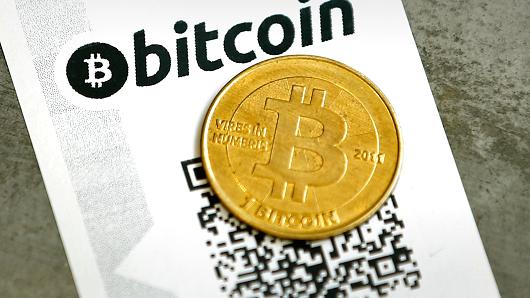Given the turbulent, even frothy environment for disruptive digital technologies, one novel entrant promises to be among the frothiest: blockchain. The secure distributed ledger technology behind Bitcoin, blockchain has exploded out of the realm of the dubious cryptocurrency into a hype-driven category of its own. VC money is pouring into numerous blockchain startups. IBM IBM +0.59% is betting the farm on the technology. Pundits around the globe are calling for blockchain to reinvent everything from equities trading to charitable giving. And yet, aside from Bitcoin itself, real-world implementations of blockchain are few and far between. Has the hype exceeded the reality?
Let’s see what a number of skeptics have to say.
Secure ledger from an earlier century
Blockchain is a Solution Looking for a Problem
As blockchain exploded from its cryptocurrency roots, it quickly took on new life, as proponents rushed to figure out what else it was good for. “‘Blockchain is a solution looking for a problem’ is a sentiment that we heard several times while conducting this research—a fair representation of the reality,” says Axel Pierron, founder and managing director of financial consulting firm Optimas LLC. “Rather than investing in ‘catch all’ blockchain-related initiatives, the industry should focus its attention on evaluating the various solutions that can address the issues that need to be solved.”
The Open Data Institute also warns about selecting the ‘right tool for the job.’ “We think that the government should go further and think about how it can convene sectors (such as finance, agriculture, or health care), identify common challenges in those sectors and then determine which technology approaches — whether blockchains or not — are the most appropriate in helping to address them,” the ODI blogs. “Blockchain technology is a new tool in our toolbox. We need to use it when it is the right tool for the job at hand.” (Emphasis in both paragraphs is theirs.)
End-Users Don’t Really Want to Use Blockchain
It’s difficult enough to use Bitcoin for any day-to-day task, let alone blockchain. “But still, eight years after Bitcoin launched, Satoshi Nakamoto remains the only creator to have built a blockchain that an appreciable number of ordinary people actually want to use,” opines software engineer Jon Evans, principal at HappyFunCorp and columnist for TechCrunch. “No other blockchain-based software initiative seems to be at any real risk of hockey-sticking into general recognition, much less general usage.”
Perhaps a proof of concept would help? Blockchain aficionados have implemented an online trading card game they call the Rare Pepe Game to explore the potential of the technology. Even this simple example, however, proves wanting. “[The Rare Pepe Game] also shows how a game can be built on a blockchain with virtual goods and characters and more,” explains Fred Wilson, managing partner at Union Square Ventures. “And it shows how clunky this stuff is for the average person to use. Just playing around with this over the last few days showcases to me all of the technical challenges that blockchain technology still has to overcome before it can become mainstream.”
Blockchain Will Increase Transaction Costs
By disintermediating financial institutions, so the reasoning goes, multiple parties can conduct transactions seamlessly, without paying a commission. However, cost savings are dubious. “Moving cash equity markets to a blockchain infrastructure would drive a significant increase of the overall transaction cost,” Pierron continues. “Trading on a blockchain system would also be slower than traders would tolerate, and mistakes might be irreversible, potentially bringing huge losses.”
Unlikelihood of Sufficient Adoption
The promise of blockchain in large part depends upon enough parties using the same implementation of the technology — a classic example of the network effect. However, it’s unclear any particular blockchain solution (other than Bitcoin itself) will ever be able to reach this threshold. Without such universal adoption, blockchain’s practicality is questionable. “It’s obvious that a credit union-only distributed ledger system will require universal adoption to be of any use,” says John San Filippo, cofounder and principal at OmniChannel Communications. “It’s my experience that trying to achieve universal adoption of anything in this industry is an act of pure futility.”
Blockchain is Too Complicated
The technology behind blockchain is complex enough. Add it to the complexity of a heavily regulated business environment, and blockchain may not even get out of the gate. “Blockchain is thus also turning out to be more complicated than most of us thought,” warns Kris Henley, communications manager with the Centre for the Digital Economy at the University of Surrey. “Its tremendous potential is mitigated by its steadfast resistance to being a ‘magic’ solution, and its need for regulation like so many game-changing technologies of the Digital Economy.” Optimas’ Pierron chimes in as well. “Processing trades via blockchain would not simplify the capital markets, but rather move the complexity around,” he adds.
Performance Issues
Because of its inherently distributed, peer-to-peer nature, blockchain-based transactions can only complete when all parties update their respective ledgers — a process that might take hours. As ledgers grow, furthermore, people question whether they will bog down. “Blockchain has a lot to prove in its performance,” says Peter Hiom, deputy CEO at the ASX trading exchange. The transaction delay may also be a deal-killer. “The delay before the final assurance that a transaction has been recorded ‘for good,’ that can be up to a couple of hours, would create too much uncertainty for market participants, especially during time of high volatility,” continues Pierron.
Blockchain Ledgers’ Immutability Isn’t Always a Good Thing
One of blockchain’s most touted benefits is the immutability of its ledgers: once participants record a transaction, no one can change or delete it. Such immutability prevents the correction of mistakes to be sure — but there are other issues as well. In fact, immutability may cause blockchain to run afoul of regulation. “Digital ledger technologies must be chosen based on user needs and legal requirements,” writes the Open Data Institute. “For example; tamper-proof and immutable data stores prevent the modification of stored data, but this may not always be an acceptable property. The EU ‘right to be forgotten’ requires the complete removal of information; if that data is in an unchangeable system like a blockchain, this could be impossible.”
Blockchain is a ‘Trojan Horse,’
Sent by Radical Libertarians to Undermine the Global Financial System
Take this one with a large grain of salt to be sure — but at least one Bitcoin entrepreneur has stated this position. “I have no problem with the financial industry inviting the Trojan Horse of blockchain technology into their walled garden because I know how powerful the technology is,” says Erik Voorhees, CEO, and founder of cryptocurrency startup ShapeShift.io. I’ve warned about the Libertarian context for Bitcoin before, but if any members of this devoted but misguided group believe that blockchain alone will disrupt the financial industry, they are out of touch with how cautious the industry is.
In fact, the more likely blockchain is to disrupt the global financial system, the less likely it is to succeed. For disruption to be a positive business force, it must drive new competitive advantage, not simple chaos. Blockchain may be disruptive, but it’s still an open question whether it’s too disruptive for its own good. Intellyx publishes the Agile Digital Transformation Roadmap poster, advises companies on their digital transformation initiatives, and helps vendors communicate their agility stories. As of the time of writing, none of the organizations mentioned in this article are Intellyx
Chuck Reynolds
Contributor
Please click either Link to Learn more about – TCC-Bitcoin.










